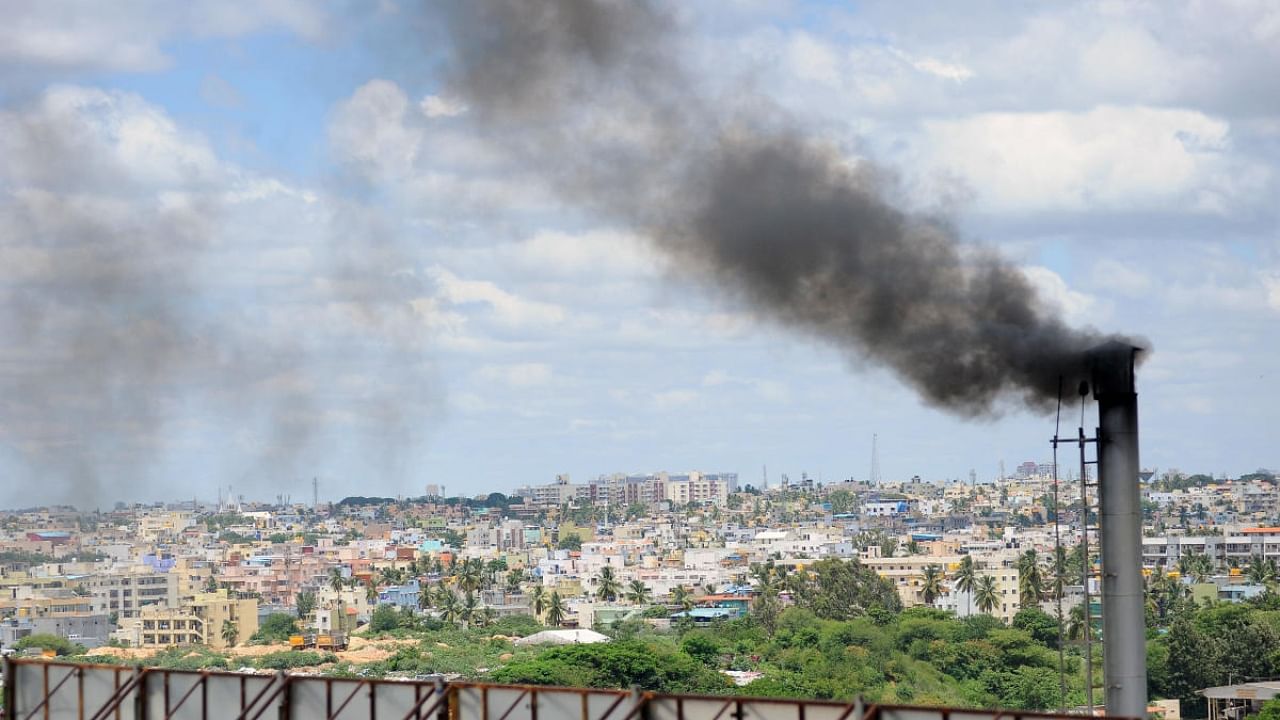
A first of its kind study of Bengaluru's air quality that combines data from an extensive network of stationery and on-road monitoring devices shows that Bengaluru's air quality is far worse than earlier reported.
In its new study, the Center for Study of Science, Technology and Policy (CSTEP) used 55 sensors to cover a majority of the city area and some peri-urban and rural locations in Bengaluru. While providing crucial actionable data, the study tries to fill the critical data gaps for air quality management.
Researchers identified 1200 km of roadways and measured the pollution from 9 am to 5 pm by dividing them into 11 unique routes (each covering 100 km). The pollution on the road was 200per cent to 1000per cent more than the ambient pollution levels.
"On-road PM2.5 exhibited higher values (between 72 and 80 microgram per cubic metre) in the western parts of the BBMP area, which include Dasarahalli, Rajarajeshwari Nagar, West Zone, South Zone, and parts of Bommanahalli," the study said.
The Mysore Road, NICE Road, Kanakapura Road, Magadi Main Road and Tumkur Road had PM2.5 greater than 88 microgram per cubic metre. Most of the eastern parts had less than 60 microgram per cubic metre.
Ambient PM 2.5 data put Mahadevpura, Dasarahalli, Rajarajeshwari Nagar, West Zone, and South Zone as clusters with higher concentration of the particles during January 2022. Bommasandra and Attibele areas were also characterised by PM2.5 of more than 50 microgram per cubic metre. Bengaluru Rural district fared better with 33 micrograms per cubic metre except a hotspot region in Hoskote.
The researchers also flagged the pollution caused by ultrafine particles (of size less than 100 nanometers), that are either directly emitted or formed through photochemical aging of gases. These particles are associated with increased blood pressure and risk of cardiovascular diseases.
The study noted that future studies may focus on characterisation of gaseous criteria pollutants by using multi-pollutant sensors as a cost-effective measure. It recommends prioritisation of mitigation activities, abating vehicular emissions, adopting regional strategies to tackle pollution rather than city-specific plans and auditing unorganised polluting industries or activities in the outskirts.
The Karnataka State Pollution Control Board (KSPCB) measures air quality in Bengaluru based on data from seven ambient stations. Two of these stations do not monitor PM 2.5, the fine particles that can enter the bloodstream through lungs and cause several diseases, including cancer. The central pollution board has set up two stations (Peenya and BTM Layout). Officials have admitted that the nine stations have proved inadequate to monitor the air quality of the city. However, efforts to add more monitoring centres are yet to get the government's support.